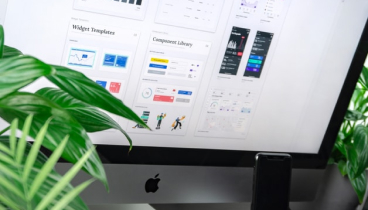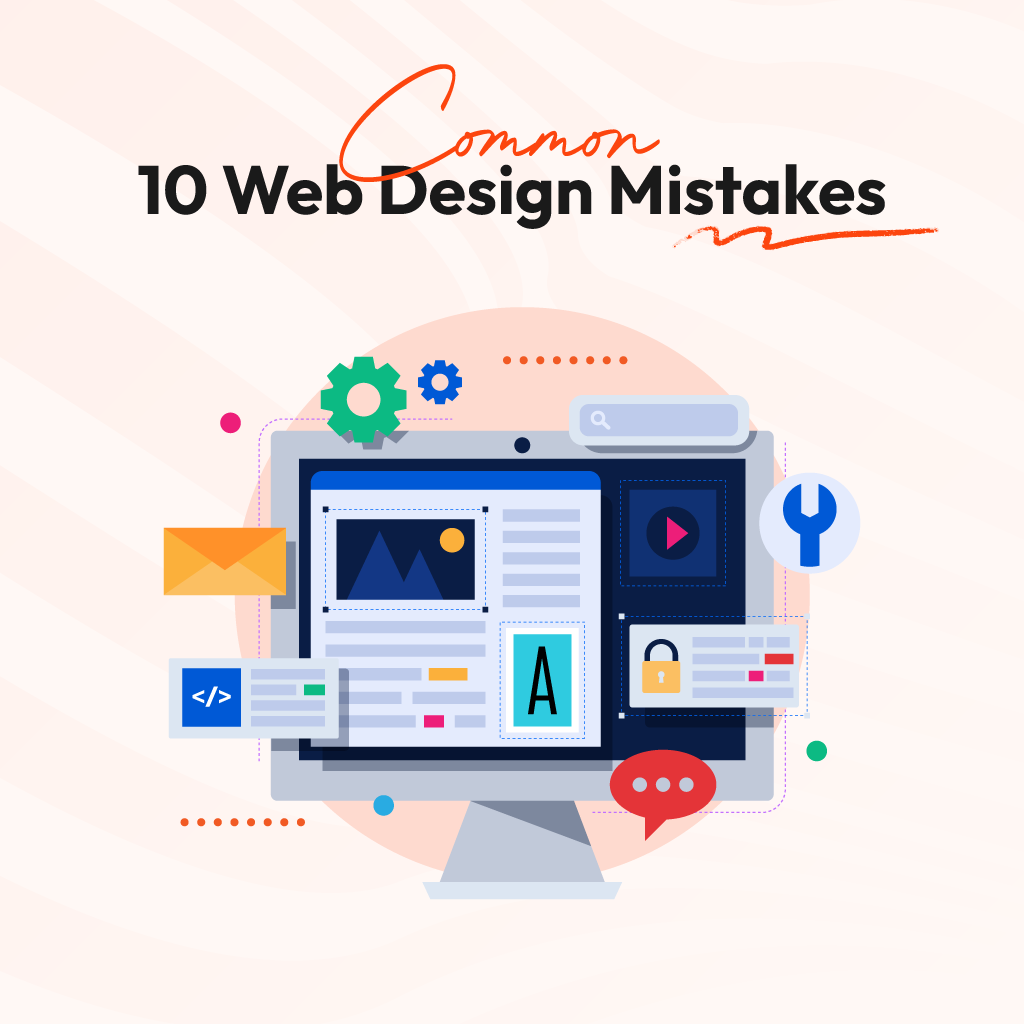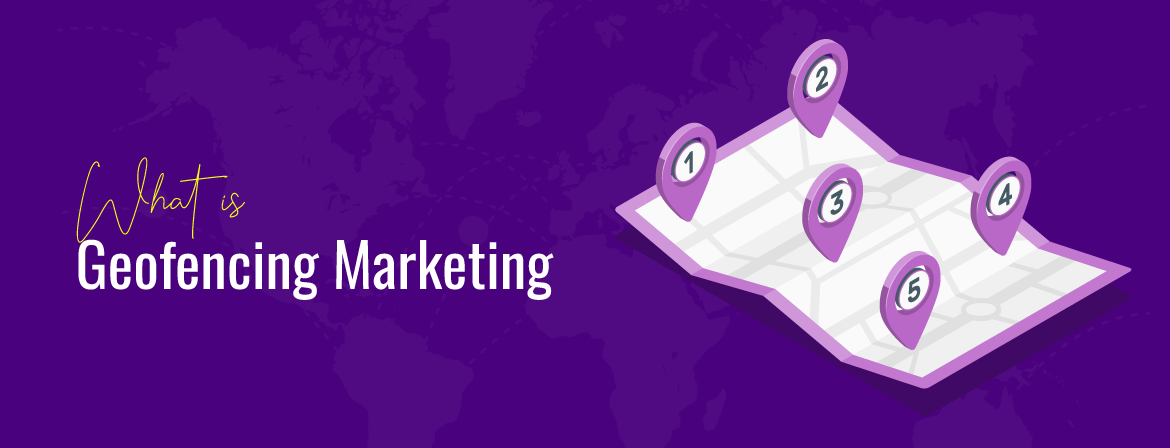Selecting the right content management system CMS is crucial for building and managing a website efficiently. With numerous CMS options available in 2025, each offering unique features and capabilities, it’s essential to carefully evaluate your requirements and preferences.
In this article, we’ll discuss key factors to consider when choosing a CMS for your website. Let’s begin by understanding what is a CMS.
What is a CMS?
A CMS stands as an abbreviation for Content Management System, which is a software that allows you to develop, organize, and create digital content without writing code. It runs everything from landing sites and product catalogs to blogs, video archives, and internal databases.
A CMS software usually functions based on two key scenarios-
Content management application (CMA): This is the section that content developers use, mostly a user-friendly dashboard with drag-and-drop features, formatting choices, and media input options.
Content Delivery Application (CDA): This works under the scenes to distribute and show the content on the real website while managing all back-end processing.
Together, these layers enable content teams to solely focus on publishing while the system manages structure, authorizations, and performance.
Types of CMS
Not all CMS systems are alike. In terms of understanding all kinds of content management systems is an important step in determining the best solution for your company.
Traditional CMS
A traditional CMS is a complete solution. It is free to use and offers significant freedom through customization. Platforms such as WordPress and Drupal integrate the frontend and backend into a single system. It’s simple and excellent for startups that require a quick setup without complicated customizations.
Examples: WordPress, Drupal.
Advantages:
- Easy to use with themes, plugins, and a WYSIWYG editor.
- Quick setup; minimal technological expertise required.
- An integrated frontend and backend equals reduced complexity.
Disadvantages:
- Limited multi-platform content delivery.
- It can get bloated, limiting performance.
- Potential security flaws.
Headless CMS
A headless CMS separates the frontend and backend, allowing you to send content anywhere—website, mobile app, wristwatch, wherever you want. This is particularly helpful for companies that manage information across multiple platforms, including websites, mobile apps, and new technologies such as voice assistants and IoT devices. It also makes scalability easy because you can update content once and have it mirrored everywhere.
Examples: Contentful, Strapi.
Advantages:
- Content delivery is flexible across multiple platforms, including the web, mobile, and IoT.
- The API-first strategy facilitates scalability.
- Centralized content updates across numerous platforms.
Disadvantages:
- Requires technical and development expertise.
- There is no built-in design layer. The frontend must be designed individually.
No-Code or Low-Code CMS
If you are looking to design and manage websites without relying heavily on developers, then you should check out these CMS. These platforms provide visual drag-and-drop interfaces that enable designers and marketers to create and update content without touching code. These platforms are an excellent alternative if your company requires a quick, visually appealing CMS with low technological overhead.
Examples: Webflow, Framer.
Advantages:
- Design with drag-and-drop functionality; no coding necessary.
- Fast setup and iteration for startups and marketing teams.
- Excellent design freedom for content-driven websites.
Disadvantages:
- Limited scalability for enterprise requirements.
- Custom functionality is harder to implement.
- Reduced control over backend customisation
Define Your Requirements
Begin by identifying your website’s specific requirements, such as the type of content you’ll be publishing, the size and complexity of your website, and any specific features or functionalities. Define how your team will utilize the CMS by outlining current and future requirements, including security, scalability, and integration. Use key questions to define needs and steer solution comparisons.
Here are some key questions to consider when determining the suitable CMS for your business.
- What are your future development plans?
- Does the CMS connect with your current technologies and infrastructure?
- Is it based on the correct programming language?
- What grade of technical skill does your team possess?
- What kind of content will you manage (blogs, e-commerce, multimedia)?
- How many users will be able to access and manage the website?
Factors to Consider in Choosing a CMS in 2025
The “right” CMS does not have the most features; rather, it has those that are appropriate for your content demands, workflows, and business goals. Whether you’re starting your first website or developing a content-heavy platform, these are the key elements to consider in 2025.
Scalability
At the beginning of your business project, it might not have too many features and products. But as time flows, you probably have many other plans to implement in your business and grow into a potential giant company. A scalable CMS will allow you to grow alongside you. For example, if you anticipate a spike in traffic following the debut of a new product, this type of system will handle higher traffic, more content, and additional functionalities with ease.
To ensure your CMS can expand with you, look for:
- Multiple-site support
- E-commerce capabilities (as needed)
- Reliable database management
Ease of Use
Whatever CMS you use, it won’t come in handy if your team doesn’t understand its potential features and applications. A user-friendly CMS allows your marketing and content teams to make modifications without relying on developers. This autonomy can shorten content cycles and keep your site fresh. Make sure your system has intuitive dashboards and clear navigation, as well as any training and assistance your teams may need to get started.
Customization and Templates
As we have already discussed, you might want to expand your business in the near future, and for that, you need to customize your website according to your requirements. A perfect CMS should include both professionally created templates and the ability to alter them. Many platforms provide drag-and-drop editors, whereas open-source CMS software provides complete control via HTML, CSS, or custom themes. This flexibility is important as your business expands and your content requirements become more sophisticated.
SEO Skills
SEO is a critical component of digital marketing since it determines how visible your website is on search engines. You want a CMS vendor who makes it simple to optimize your content so that potential clients may find you without difficulty. Look for platforms that have SEO tools or support plugins.
Ensure that CMS supports:
- Customizable URLs
- Meta tags and descriptions can be easily edited.
- Integration of SEO tools and plugins
- Fast loading speeds and mobile responsiveness
- XML sitemaps and schema markup
Security Concerns
Security is a major concern for companies that manage sensitive data. Open-source CMS solutions, such as WordPress, have security plugins, but they require constant updates and monitoring. Proprietary CMS systems such as Wix or Sitecore frequently provide built-in security measures and maintenance, making security administration easier for the end user.
However, you should choose a CMS that offers-
- Regular updates
- SSL support
- User authentication
- Data backup and recovery options
Support and Community
When assessing a CMS system, evaluate the level of assistance provided. Open-source platforms, such as WordPress and Joomla, have big communities that offer significant resources and troubleshooting help. Wix and Squarespace are two examples of proprietary CMS solutions that provide dedicated customer assistance.
Small businesses and marketers may select platforms with strong community support or customer service, while developers and organizations may seek solutions that offer technical documentation and expert help.
Multichannel Support & Headless CMS
As digital content spreads beyond web pages, choose a CMS that allows multichannel delivery. Headless CMS platforms separate content management from display, allowing you to send material to websites, applications, social media, and IoT devices via APIs.
Top 10 CMS Software in 2025
Here, we have listed some of the trending and best CMS in 2025. Review your requirements and choose a suitable CMS for your website.
WordPress
WordPress.org is our number one suggestion for being the greatest CMS platform for over a decade. Users frequently seek suitable WordPress hosting that allows them to set up their website with optimal speed. It’s no surprise that the most popular CMS worldwide accounts for 62.5% of the CMS market.
What Sets It Apart: The largest plugin ecosystem, with over 100,000 free and commercial themes and plugins, sets it apart from other CMS. WordPress is ideal for bloggers, content creators, e-commerce stores, digital agencies, and enterprises.
Pros:
- Provides high extensibility
- Promotes SEO for increased website traffic.
- Flexibility and freedom.
- Simple to use without requiring a developer.
Cons:
- Need to pay for a domain registration and hosting account through a web host.
- Not responsible for security or backups
Shopify
Shopify is another hosted CMS platform designed for selling eCommerce products. It is a top eCommerce platform that has sophisticated built-in capabilities, a wide range of app alternatives, and 24/7 support. You will not need to purchase hosting, install software, or handle upgrades and backups.
What’s impressive about Shopify is its straightforward drag-and-drop interface. It allows for in-store sales, which is ideal if you operate both a physical and an internet business.
Pros:
- Integrated payments (Shopify Payments, PayPal, etc.)
- A large collection of themes and applications for customization
- No forced upgrades depending on sales numbers.
- 24/7 assistance through chat, email, phone, and forums.
Cons:
- Costs quickly grow with third-party apps.
- Limited functionality as compared to WordPress plugins.
Wix Studio (Professional Website Builder)
Wix Studio is intended for freelancers, agencies, and organizations that want greater design control, AI-powered tools, and client management features than the standard Wix builder. It’s an excellent WordPress alternative for professional tasks.
Pros:
- Advanced AI-powered design tools for responsive layouts.
- Built-in client feedback and collaboration tools.
- Flexible templates and layouts
- Manage many webpages from a single dashboard.
- Hosting, security, and upgrades are provided.
Cons:
- The free plan does not support custom domains.
- The learning curve is steeper than with conventional Wix.
- Less flexible than self-hosted WordPress in terms of plugins and full management.
Drupal
Drupal is an open-source, developer-focused content management system designed for intricate, busy websites. Its robust design facilitates enterprise-level scalability, customizable permissions, and organized content. It is ideal for skilled developers or businesses in need of a scalable, safe content management system for intricate and content-rich websites.
Pros:
- Robust security features (access control, encryption)
- A vast collection of themes and modules
- Advanced user rights and support for several languages
- A great taxonomy system for managing enormous amounts of content
- Distributions for installations unique to a given specialty
Cons:
- Steep learning curve
- Coding is necessary for upkeep and optimization.
Adobe Experience Manager (AEM)
AEM is a premium enterprise CMS built for major businesses that require comprehensive content management, digital asset control, and omnichannel publishing.
Pros:
- Deep integration with the Adobe ecosystem.
- Powerful DAM (Digital Asset Management).
- Scalable for global teams, customisation
Cons:
- Very high cost.
- Long setup and implementation process
- Requires specialist team or agency help.
Joomla
Joomla is a versatile open-source content management system (CMS). It includes a variety of templates and extensions for individuals who need to create personalized posts. Installing Joomla is not for beginners, but it is perfect for developers and experienced website producers.
Joomla is frequently used to build complex websites, such as corporate sites, online forums, and even e-commerce storefronts. It is highly customisable, with full control over content management structures, which makes it unique than other CMS. It is best for developers and larger websites that require more dynamic content structures, but do not want to go full enterprise.
Pros:
- An extensive selection of extensions provides numerous alternatives.
- Multiple design options.
- Still easy to edit contents
- Constant feature updates.
Cons:
- You may encounter compatibility issues with certain addons.
- Complex system.
Ghost
Ghost is a CMS platform created primarily for bloggers. You’ll often hear it referred to as a “headless CMS,” which may seem strange. It places a high value on SEO, content speed, and an organized editing process.
Your data or content may be shown on a website, but it may also be delivered to a mobile application or another platform. However, you don’t have to worry about this if you’re not a developer or if you only want to use Ghost for blogging.
Pros:
- Support for Markdown for organized and quick writing
- Content “cards” in a modern editor (similar to WordPress blocks)
- Integrated SEO capabilities (no plugins required)
- Simple setup for memberships and paid subscriptions
Cons:
- Less robust and adaptable than WordPress
- Insufficient hosting assistance in contrast to larger CMSs
Strapi (Headless CMS)
Strapi is an open-source, self-hosted headless CMS that allows developers complete control over content models, APIs, and hosting. It’s extremely adaptable and adjustable, making it great for teams who want complete control over their data without being locked into a vendor.
Pros:
- Completely configurable and open-source
- REST and GraphQL APIs are automatically produced, with modification possibilities.
- Strong developer community with active support
- Rich development tools include a CLI and a large documentation collection.
- No vendor lock-in; free to use.
Cons:
- Requires setup, hosting, and continuous maintenance.
- Fewer built-in integrations compared to SaaS CMSs
- Performance depends on your hosting infrastructure.
HubSpot Content Hub
HubSpot Content Hub is an all-in-one CMS + CRM solution designed for marketers and businesses seeking integrated content, sales, and marketing capabilities. It’s simple to use, safe, and ideal for customisation, but it’s less appropriate for pure eCommerce sites.
Pros:
- Beginner-friendly with intelligent content tailoring.
- Built-in security (CDN, firewall, and DDoS protection)
- Developer tools (serverless functionalities and flexible themes)
- Integrate seamlessly with HubSpot CRM, email, and sales tools.
Cons:
- The free version includes HubSpot branding.
- Limited eCommerce features (needs Shopify/WooCommerce integration).
Big Commerce
BigCommerce is ideal for setting up an online business since it manages everything. So, like Shopify, you don’t have to worry about any technological issues. Moreover, BigCommerce provides a free domain name, but you may also use your own personalized one. The CMS offers a trial plan, which allows you to test it out before making a final decision.
Big Commerce is perfect for growing enterprises and established brands that wish to reduce their dependency on third-party applications.
Pros:
- A free trial is offered.
- Choose a free domain (mystore.mybigcommerce.com) or a custom one.
- Several payment options: PayPal, Apple Pay, Amazon Pay, and cards
- 24/7 assistance by chat, email, and phone.
- Can interact with WordPress for hybrid usage.
Cons:
- Limited customization options compared to WooCommerce.
- Limited themes and third-party connections.
- Automatic plan upgrade when sales reach specific levels.
Final Words
Choosing the ideal CMS for your business is more than simply picking a tool; it’s about finding a platform that fits your workflow, scales with your project’s development, and allows you to build effectively. Before making a final decision, consider factors such as customizability, scalability, budget, and community support.
In terms of quality assurance, each CMS in this list works perfectly. All you have to do is evaluate your requirements and choose a suitable CMS for your website.







